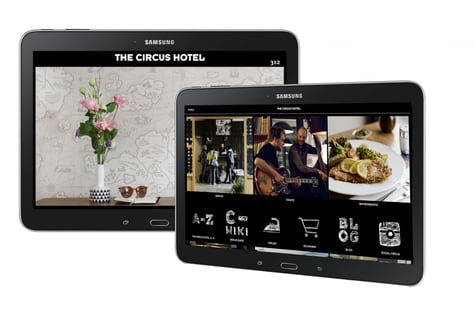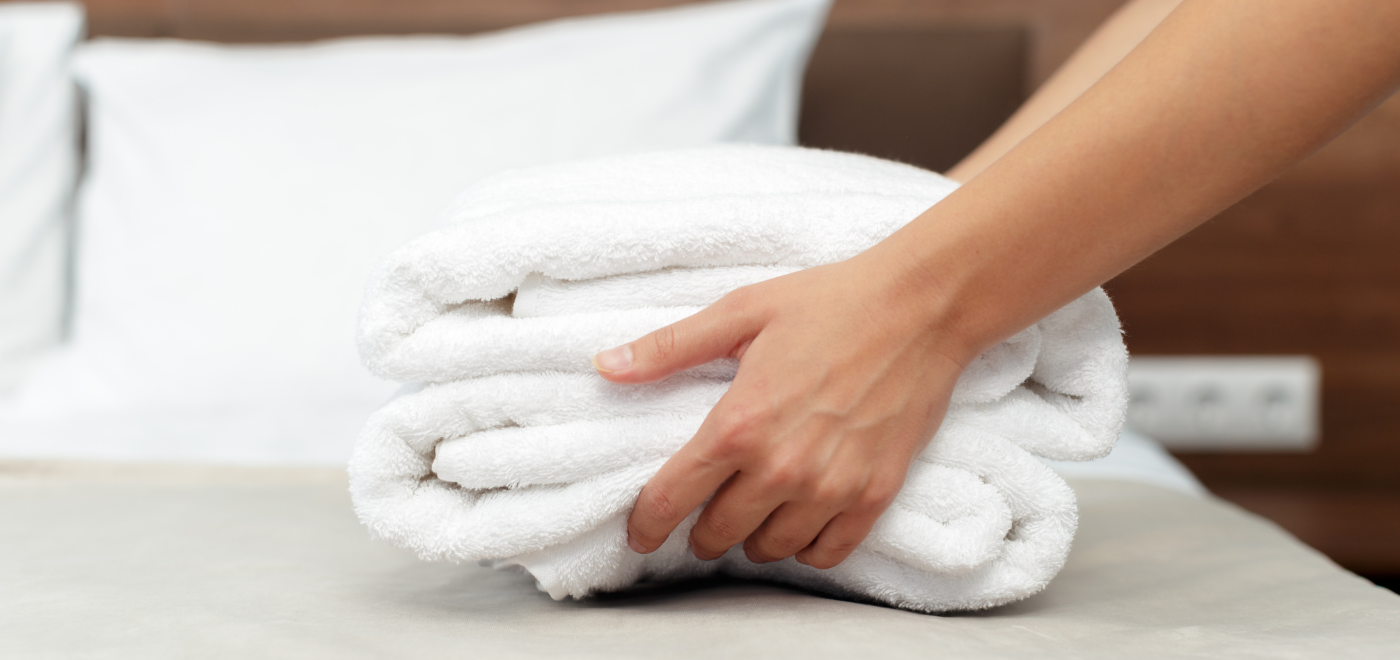![]() This is the story of SuitePad’s journey from its original concept to the product we see today!
This is the story of SuitePad’s journey from its original concept to the product we see today!
This blog post is the first in a three-part series following an interview with Managing Director and Co-Founder of SuitePad, Tilmann Volk.
When Moritz von Petersdorff-Campen and Tilmann Volk first founded SuitePad, their vision for the solution they wanted to eventually offer looked very different than it does today. Having previously worked in tech startups, they were both confident that they could bring technology to the hotel industry, but venturing into this new market brought with it some steep learning curves. It’s these steep learning curves that have shaped SuitePad into what it is today, making it the most suitably designed digital solution for the hotel industry on the market.
The third-party device dilemma
When SuitePad first started, the plan was to develop a solution that would use software-integrated customer-grade tablets – initially, Samsung Galaxy tablets – to adapt a solution for the hotel industry. Samsung’s high-spec tablets seemed ideal because they were powerful and featured everything you could want – high-spec cameras, HD screens, and a sleek and stylish design. In a recent interview with Tilmann, he said, “at first, we ourselves were convinced that consumer-grade tablets could get the job done well”, but things didn’t exactly go to plan. Quite soon, it was obvious that the consumer-grade hardware had several issues – the tablets would constantly break due to their light-weight design, charging cables were being taken from rooms, and some guests felt uncomfortable having a device in the room with an integrated front-facing camera. Quite simply, they weren’t designed for hotel rooms.
 These issues were a real headache for SuitePad’s early customers, and even threatened to end the business at the first hurdle! It was quite clear that, while the Samsung devices were great for customers to use in the comfort of their own home, they weren’t optimized for use in hotel rooms... nothing was. It was clear what needed to be done – Moritz and Tilmann set out to design their very own tablets optimized specifically for hotel rooms.
These issues were a real headache for SuitePad’s early customers, and even threatened to end the business at the first hurdle! It was quite clear that, while the Samsung devices were great for customers to use in the comfort of their own home, they weren’t optimized for use in hotel rooms... nothing was. It was clear what needed to be done – Moritz and Tilmann set out to design their very own tablets optimized specifically for hotel rooms.
Tilmann told us that “when you buy a third-party device to put in your room, you're not getting what you need and you’re paying more for what you don't need, like the brand name and fancy camera technology. That really gave us the impetus to start developing our own hardware along the lines of our own requirements. And it really helped us to build the perfect product for hotels!”
Building the first SuitePads
 The co-founders needed to find a supplier that they could trust to provide them with devices that met their vision, and that’s exactly what they got! After researching device manufacturers all over the world, they discovered the perfect factory for producing SuitePads based in Shenzhen, China – a subject we’ll cover in more detail in the next blog in this series!
The co-founders needed to find a supplier that they could trust to provide them with devices that met their vision, and that’s exactly what they got! After researching device manufacturers all over the world, they discovered the perfect factory for producing SuitePads based in Shenzhen, China – a subject we’ll cover in more detail in the next blog in this series!
With the ability to sculpt the product they wanted, the first generation of SuitePads was born! The SuitePad 8 came with a heavy-duty docking station that could withstand thousands of docking cycles and got rid of standard charging cables which stopped guests taking them home. The front-facing camera was taken out, the screen reinforced, and all the components were contained in robust metal casing.
Producing their own tablets allowed Moritz and Tilmann to optimize the device beyond what was capable before – a factor that really makes SuitePad stand out from their competitors! By going back to basics and building a tablet that’s specifically optimized for the hotel room from scratch, they were able to make a better product at a fraction of the price when compared to third-party devices, making it even cheaper for customers! The devices didn’t need to be super light as they weren’t designed to be taken out of the hotel room, and they didn’t need the same level of specifications as say, an iPad, as they weren’t going to be running multiple hi-spec programs all at once. They could design a product that did exactly what it needed to do, without the need to waste money on extra unnecessary features.
In hindsight, the issues that initially threatened to stop SuitePad from moving forward were, in fact, a blessing in disguise! Once they started producing their own hardware, SuitePad went from strength to strength and now has tablets in over 50,000 hotel rooms around the world!
Taking control means SuitePads are better for hotels
Having control of the hardware production process puts SuitePad in a unique position – they can now update their hardware using recommendations and critiques from customers, allowing them to optimize the devices down to the minute details that just wouldn’t have been possible when using third-party vendors. This is exactly what has happened with the soon to be launched SuitePad 10, as Tilmann explained – “for those hotels that need or want to offer their guests that little bit more, that extra bit on top, we were asked to offer something for these customers – and so we've answered with the SuitePad 10”.
Having complete control of the hardware production process means SuitePad are able to design solutions that are specifically designed for the hotel room rather than just using adapted third-party devices. This also means that SuitePad is able to offer a product that is specifically designed for the bespoke software they develop, and by acting on the recommendations of customers, they’re able to provide a complete end-to-end service.
- Published on August 06, 2019



.png)


